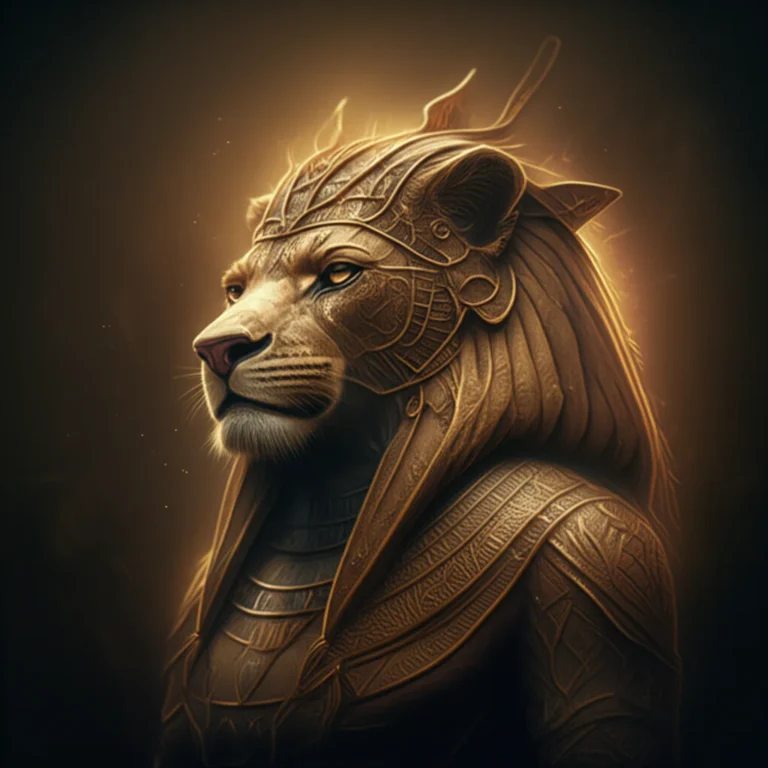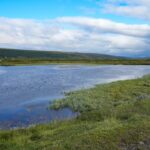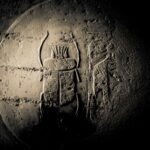Support our educational content for free when you purchase through links on our site. Learn more
The Voyages of Pytheas: 7 Epic Discoveries That Changed History 🌊
Imagine sailing into the unknown with nothing but the stars and your wits as guides—no GPS, no maps, just the endless horizon and a burning curiosity. That’s exactly what Pytheas of Massalia did over 2,300 years ago when he embarked on a daring voyage beyond the familiar Mediterranean world. From circumnavigating Britain to describing the mysterious land of Thule and the frozen Arctic seas, Pytheas’s journey reads like an ancient adventure novel packed with scientific breakthroughs and cultural revelations.
In this article, we unravel the full story of Pytheas’s epic explorations, diving deep into his groundbreaking discoveries, the controversies that shadowed his legacy, and how his observations laid the foundations for modern geography and oceanography. Curious about how a Greek merchant became the first to explain tides or chart the midnight sun? Keep reading—we’ll reveal the secrets of his lost masterpiece and why his voyage still fascinates historians and explorers today.
Key Takeaways
- Pytheas was the first Greek explorer to map Northern Europe, including Britain, the Baltic Sea, and the Arctic Circle.
- He made pioneering scientific observations such as measuring latitude with a gnomon and linking tides to the moon’s phases.
- His description of Thule introduced the concept of the midnight sun to the ancient world.
- Despite ancient skepticism and lost writings, modern research confirms many of his accounts.
- Pytheas’s voyage expanded the known world and inspired centuries of exploration.
Ready to explore more about ancient navigation and discovery? Check out our curated books on ancient exploration and maritime history to dive deeper into the fascinating world of early explorers! 🚢✨
Table of Contents
- ⚡️ Quick Tips and Facts
- Unveiling Pytheas: The Enigmatic Greek Explorer and His World 🌍
- Who Was Pytheas of Massalia? A Merchant, Explorer, or Scientist? 🤔
- Dating the Odyssey: When Did Pytheas Embark on His Legendary Voyage? 🗓️
- The Driving Force: Why Pytheas Dared to Sail Beyond the Known World 🧭
- Navigating the Ancient Seas: Pytheas’s Ship and Maritime Technology ⛵
- 1. Circumnavigating Albion: Pytheas’s Groundbreaking Voyage Around Britain 🇬🇧
- 2. The Mythical North: Unraveling the Mystery of Thule, the Land of the Midnight Sun ❄️
- 3. Confronting the Frozen Frontier: Pytheas’s Encounter with the Arctic Ice 🧊
- 4. Beyond the Pillars: Did Pytheas Reach the Baltic Sea or the Amber Coast? 🌊
- Pytheas’s Scientific Legacy: Master of the Stars and Tides 🔭
- The Skeptics and the Lost Scrolls: Why Pytheas’s Account Was Doubted (and Why It Matters) 📜
- Pytheas’s Enduring Impact: From Ancient Maps to Modern Exploration 🗺️
- Our Take: Why Pytheas Remains a Beacon of Exploration and Scientific Inquiry ✨
- Conclusion
- Recommended Links
- FAQ
- Reference Links
⚡️ Quick Tips and Facts
Welcome aboard the History Hidden™ time-ship! Before we plunge into the icy waters of Pytheas’s epic journey, here’s a quick cheat sheet to get you oriented:
| Fact | Detail |
|---|---|
| Who? | Pytheas of Massalia, a Greek explorer, merchant, and astronomer from modern-day Marseille (c. 350 BC) |
| When? | Circa 325 BC (exact dating debated) |
| Where? | Northern Europe: Britain, the North Sea, Baltic region, and the mysterious Thule |
| What? | First Greek to describe the Arctic, polar ice, tides linked to the moon, and the midnight sun |
| Legacy? | Original writings lost; known through later authors like Strabo and Pliny the Elder |
| Controversy? | Ancient skeptics called him a liar; modern historians largely vindicate him |
| Key Contributions? | Latitude measurement techniques, ethnographic descriptions, and oceanographic observations |
Curious how a merchant from sunny Massalia braved the cold unknown? Keep reading!
Unveiling Pytheas: The Enigmatic Greek Explorer and His World 🌍
Pytheas wasn’t your average Greek merchant. At a time when most sailors hugged the Mediterranean coastline, he dared to venture into the Atlantic’s chilly embrace. Imagine setting sail without GPS, weather forecasts, or even a reliable map! His journey shattered the Mediterranean-centric worldview, introducing the Greeks to lands of ice, endless daylight, and strange peoples.
Massalia, his home port, was a bustling hub of trade and culture, founded by Phocaean Greeks. From here, Pytheas launched his voyage, blending commerce, curiosity, and scientific inquiry.
Who Was Pytheas of Massalia? A Merchant, Explorer, or Scientist? 🤔
Pytheas wore many hats. Our History Hidden™ team sees him as a proto-scientist—a navigator who combined merchant ambitions with astronomical observations and ethnographic curiosity.
- Merchant: Likely motivated by trade interests, especially in tin from Cornwall and amber from the Baltic.
- Explorer: Ventured far beyond the known world, mapping coasts and islands.
- Scientist: Used instruments like the gnōmōn to measure latitude; first to link tides to the moon’s phases.
His treatise On the Ocean (now lost) was a pioneering work blending geography, astronomy, and anthropology.
Dating the Odyssey: When Did Pytheas Embark on His Legendary Voyage? 🗓️
Pinpointing the exact year is tricky. Scholars generally place Pytheas’s voyage around 325 BC, but some argue for a slightly earlier or later date.
- Why the uncertainty? His original account is lost; we rely on later authors quoting or criticizing him.
- Historical context: His voyage fits the era of Greek exploration and colonization, just before Alexander the Great’s empire peaked.
The timing is crucial—it was a moment when the Mediterranean world was expanding its horizons, and Pytheas was at the forefront.
The Driving Force: Why Pytheas Dared to Sail Beyond the Known World 🧭
What pushed Pytheas to risk the unknown? Our historians suggest a cocktail of:
- Commercial interests: Tin from Cornwall was vital for bronze-making; amber from the Baltic was prized.
- Scientific curiosity: Pytheas’s observations show a keen interest in astronomy and natural phenomena.
- Political factors: Massalia’s rivalry with Carthage may have encouraged new trade routes.
His voyage was not just a merchant’s quest but a scientific expedition disguised as trade.
Navigating the Ancient Seas: Pytheas’s Ship and Maritime Technology ⛵
How did Pytheas sail such vast, treacherous waters?
- Likely used a holkas, a sturdy Greek cargo ship with a flat bottom and sails.
- Possibly supplemented by smaller Celtic-style boats for coastal exploration.
- Navigation relied on celestial bodies, landmarks, and rudimentary instruments like the gnōmōn.
- No compasses yet—imagine steering by sun and stars alone!
This blend of technology and skill made his voyage possible, though perilous.
1. Circumnavigating Albion: Pytheas’s Groundbreaking Voyage Around Britain 🇬🇧
Pytheas was the first Mediterranean explorer to describe Britain in detail:
- Claimed to have circumnavigated the island, measuring its perimeter at over 40,000 stadia (~4,500 miles).
- Described the Britons’ simple lifestyle: thatched cottages, subterranean grain storage, and chariot warfare reminiscent of Homeric tales.
- Identified three key regions:
- Kantion (Kent): A gateway peninsula.
- Belerion (Cornwall): Renowned for tin mining; tin was transported to the island of Ictis at low tide.
- Orkas (Orkney Islands): The northern tip, marking the first written reference to Scotland.
His ethnographic notes reveal a people adapted to cold, harsh climates but with peaceful kings and rich traditions.
2. The Mythical North: Unraveling the Mystery of Thule, the Land of the Midnight Sun ❄️
Thule remains one of history’s most tantalizing mysteries:
- Pytheas described it as six days’ sailing north of Britain, near the “frozen sea.”
- Characterized by no nights during midsummer—the midnight sun phenomenon.
- Inhabitants lived on millet, herbs, and brewed a honey-grain beverage (likely mead).
- Scholars debate its exact location: Iceland, Norway, or the Shetlands?
Pytheas’s account was the first to bring this mythical land into the realm of geography.
3. Confronting the Frozen Frontier: Pytheas’s Encounter with the Arctic Ice 🧊
One day’s sail beyond Thule, Pytheas encountered a “frozen ocean” or pepēguia thalatta:
- Described as a “marine lung,” a mixture of sea, ice, and air—likely pancake ice.
- This was the first recorded observation of Arctic sea ice.
- His vivid description baffled ancient skeptics but is cited today in navigation manuals like Nathaniel Bowditch’s American Practical Navigator.
Imagine sailing into a foggy, icy expanse where water, air, and land blur—a chilling frontier indeed!
4. Beyond the Pillars: Did Pytheas Reach the Baltic Sea or the Amber Coast? 🌊
Pytheas’s journey didn’t stop at Britain and Thule:
- He sailed beyond the Rhine River, possibly into the Baltic Sea.
- Described the “estuary of the Ocean named Metuonis,” inhabited by the Germanic tribe Guiones.
- Reported the Isle of Abalus, rich in amber, a prized commodity.
- Turned back near the Vistula River, marking the eastern boundary of his exploration.
His amber trade observations hint at early economic networks stretching from the Baltic to the Mediterranean.
Pytheas’s Scientific Legacy: Master of the Stars and Tides 🔭
Pytheas was not just an adventurer but a pioneer scientist. Let’s delve into his groundbreaking observations.
Mapping the Heavens: Pytheas’s Revolutionary Latitude Measurements 🌟
- Used a gnōmōn (vertical rod) to measure the sun’s altitude and calculate latitude.
- Achieved remarkable accuracy for his time:
- Measured Massalia’s latitude within 5 minutes of actual.
- Defined the Arctic Circle at about 66°, close to modern values.
- Correlated length of daylight with latitude, noting longer summer days as he traveled north.
- His methods predate and anticipate later astronomers like Eratosthenes.
Understanding the Ocean’s Breath: Pytheas’s Insights into Tides 🌊
- First to link tides with the phases of the moon.
- Reported tidal ranges in Britain up to 80 cubits (~37 meters), an overestimate but indicating keen observation.
- Explained flood tides as caused by the “filling of the moon” and ebb tides by its “lessening.”
- This was a monumental leap in understanding oceanography.
The Skeptics and the Lost Scrolls: Why Pytheas’s Account Was Doubted (and Why It Matters) 📜
Despite his pioneering work, Pytheas faced harsh criticism.
Strabo’s Scorn and Polybius’s Doubts: Ancient Critics and Their Agendas 😠
- Strabo called Pytheas “the worst possible liar,” dismissing his accounts as fabrications.
- Polybius accused him of being a “poor man” and “private individual” incapable of funding such a voyage.
- Their skepticism may stem from professional jealousy or political motives.
- Yet, they paradoxically cited Pytheas’s work to refute him, preserving fragments of his legacy.
“On the Ocean”: The Lost Masterpiece and Its Fragmented Legacy 💔
- Pytheas’s original treatise, On the Ocean, has been lost—likely destroyed in fires like those at the Library of Alexandria.
- We know of it only through quotations and paraphrases by later authors.
- This loss is a tragedy for history, as it contained rich scientific and ethnographic data.
- Modern historians piece together his voyage like detectives, reconstructing a fascinating narrative from shards.
Pytheas’s Enduring Impact: From Ancient Maps to Modern Exploration 🗺️
Pytheas’s voyage transformed ancient geography and inspired generations:
- Introduced Northern Europe and the Arctic to Mediterranean knowledge.
- His descriptions influenced cartographers and explorers for centuries.
- Pioneered scientific methods in navigation and astronomy.
- Inspired later explorers to venture north, demystifying the “ends of the world.”
- His name is commemorated in lunar craters and scientific literature.
Our Take: Why Pytheas Remains a Beacon of Exploration and Scientific Inquiry ✨
At History Hidden™, we salute Pytheas as a trailblazer who combined courage, curiosity, and science. His voyage wasn’t just a daring adventure but a foundational moment in the history of exploration.
- ✅ He expanded the known world beyond myths and hearsay.
- ✅ His scientific observations laid groundwork for future geography and oceanography.
- ✅ Despite ancient skepticism, modern research vindicates him.
Pytheas reminds us that sometimes, the greatest discoveries come from those willing to challenge the limits of their world.
Recommended Links
- Pytheas of Massalia – Wikipedia
- On the Ocean: The Famous Voyage of Pytheas – World History Encyclopedia
- Ancient Navigation and Astronomy – National Maritime Museum
- The Midnight Sun Phenomenon Explained – NASA
- History Hidden™: Folklore and Legends
- History Hidden™: Mythology Stories
FAQ

Q1: Did Pytheas really reach the Arctic Circle?
✅ Most evidence suggests yes. His descriptions of the midnight sun and frozen seas align with Arctic latitudes.
Q2: Why was Pytheas’s work lost?
❌ His original treatise likely perished in ancient library fires or was lost over time, surviving only in fragments quoted by others.
Q3: How reliable are Pytheas’s measurements?
✅ Remarkably accurate for his era, especially his latitude calculations using the gnomon.
Q4: What is Thule?
🤔 A mysterious northern land described by Pytheas, possibly Iceland, Norway, or a group of islands near the Arctic Circle.
Q5: How did Pytheas influence later explorers?
✅ His voyage expanded geographic knowledge and inspired scientific approaches to exploration.
Reference Links
- Strabo, Geography, Book 2, Chapter 5: Perseus Digital Library
- Pliny the Elder, Natural History, Book 4: LacusCurtius
- Diodorus Siculus, Bibliotheca Historica, Book 5: Perseus Digital Library
- Nathaniel Bowditch, American Practical Navigator (Ice Navigation chapter): NOAA
- Barry Cunliffe, Europe Between the Oceans (2015), Oxford University Press
Ready to dive deeper into the hidden currents of history? Pytheas’s voyage is a shimmering thread weaving ancient science, myth, and daring adventure. Stay curious, explorers! 🌊🧭
Conclusion

Pytheas of Massalia stands as one of antiquity’s most remarkable explorers—a true pioneer who dared to sail beyond the familiar Mediterranean into the icy, mysterious waters of Northern Europe. His voyage was not just a merchant’s quest for tin and amber but a scientific expedition that expanded the horizons of geography, astronomy, and ethnography.
Positives:
- Pytheas introduced the Greeks to the British Isles, the Arctic phenomena like the midnight sun, and the concept of tides linked to the moon.
- His use of instruments like the gnōmōn for latitude measurements was groundbreaking.
- He provided detailed ethnographic accounts of northern peoples, enriching our understanding of ancient cultures.
- Despite ancient skepticism, modern scholarship largely confirms the veracity of his observations.
Negatives:
- His original work On the Ocean is lost, leaving us to reconstruct his voyage from fragments and secondhand reports.
- Some of his measurements (like tidal heights) were exaggerated or misunderstood by later interpreters.
- Ancient critics like Strabo and Polybius cast doubt on his credibility, which delayed acceptance of his discoveries.
Our Verdict: Pytheas’s voyage is a cornerstone of early scientific exploration. His courage, curiosity, and methodical approach make him a beacon for explorers and historians alike. While the loss of his original writings is a historical tragedy, the surviving fragments paint a vivid picture of a man who expanded the known world and laid foundations for future geographic and oceanographic science.
If you’ve ever wondered how ancient explorers pieced together the map of the world, Pytheas’s journey is a thrilling starting point—and a reminder that curiosity can break the boundaries of the known.
Recommended Links
For those eager to dive deeper into Pytheas’s voyage and its historical context, here are some highly recommended books and resources available on Amazon:
-
Europe Between the Oceans: 9000 BC–AD 1000 by Barry Cunliffe
Amazon | Barnes & Noble -
The Discovery of Britain: The Voyage of Pytheas by Barry Cunliffe (Article & Essays)
Amazon -
Ancient Mariners: Seafarers and Sea Fighters of the Mediterranean in Ancient Times by Lionel Casson
Amazon -
The American Practical Navigator by Nathaniel Bowditch (for insights on ice navigation and tides)
Amazon
👉 Shop Books on Ancient Exploration on:
FAQ

What were the key discoveries made by Pytheas during his voyages?
Pytheas’s key discoveries include:
- First Greek descriptions of the British Isles, including detailed ethnographic notes on the inhabitants.
- The concept of Thule, a land near the Arctic Circle with phenomena like the midnight sun.
- Observations of polar ice and the frozen ocean beyond Thule.
- The discovery of the Baltic Sea region and the amber trade.
- Scientific measurements of latitude using a gnomon.
- The first known explanation of tides linked to the moon’s phases.
These discoveries expanded the geographical and scientific knowledge of the ancient world.
Who was Pytheas and what motivated him to embark on his famous voyages?
Pytheas was a Greek merchant, astronomer, and navigator from Massalia (modern Marseille). His motivations likely combined:
- Commercial interests: Seeking tin from Cornwall and amber from the Baltic.
- Scientific curiosity: Documenting natural phenomena like tides, celestial movements, and ethnography.
- Political-economic factors: Massalia’s rivalry with Carthage and expanding trade routes.
His voyage was a blend of commerce, exploration, and early scientific research.
What route did Pytheas take during his voyage to the British Isles and beyond?
Pytheas likely:
- Sailed from Massalia westward through the Straits of Gibraltar.
- Traveled north along the Atlantic coasts of Iberia and Gaul.
- Crossed the English Channel to Britain, circumnavigating the island.
- Continued north to the Orkney Islands.
- Sailed six days further north to Thule (possibly Iceland or Norway).
- Ventured eastward into the Baltic Sea region, reaching areas near the Rhine and Vistula rivers.
- Returned along the European coast, possibly via the Don River.
What are the most significant historical contributions of Pytheas’ voyages?
Pytheas’s contributions include:
- Expanding the geographical knowledge of Northern Europe and the Arctic.
- Introducing scientific methods to navigation and geography.
- Providing early ethnographic accounts of northern tribes.
- Explaining natural phenomena such as tides and the midnight sun.
- Inspiring later explorers and geographers, influencing cartography for centuries.
How did Pytheas’ voyages influence the development of geography and cartography in ancient times?
Pytheas’s latitude measurements and descriptions of northern lands challenged the Mediterranean-centric worldview. His work:
- Encouraged the use of astronomical observations in mapping.
- Introduced the concept of polar regions and extreme latitudes.
- Provided data that later geographers like Eratosthenes and Strabo referenced (even skeptically).
- Helped shape early maps that included Britain, Thule, and the Baltic.
What were some of the challenges and obstacles faced by Pytheas during his voyages?
Challenges included:
- Navigating uncharted, icy waters without modern instruments.
- Facing harsh climates: cold, fog, and polar ice.
- Potential hostility or unfamiliarity with northern tribes.
- The logistical difficulty of provisioning and sailing long distances.
- Skepticism and criticism from contemporaries upon his return.
Are there any surviving accounts or writings from Pytheas himself about his voyages?
❌ Unfortunately, Pytheas’s original work On the Ocean has been lost. Our knowledge comes from:
- Fragments and quotations in works by Strabo, Pliny the Elder, Diodorus Siculus, and others.
- Paraphrases and critiques by ancient geographers.
- Modern reconstructions based on these secondary sources.
How did Pytheas’ discovery of the Midnight Sun and other natural phenomena impact ancient Greek understanding of the world?
Pytheas’s descriptions introduced the Greeks to phenomena previously unknown or considered mythical:
- The midnight sun challenged the idea of a uniform day-night cycle.
- The frozen ocean and polar ice expanded the concept of habitable zones.
- His explanation of tides linked to the moon was a major scientific breakthrough.
- These observations gradually shifted Greek cosmology from myth to empirical observation.
Reference Links
- Pytheas | Macedonia, Massalia & Voyages | Britannica
- Pytheas of Massalia – Wikipedia
- On the Ocean: The Famous Voyage of Pytheas – World History Encyclopedia
- Strabo, Geography, Book 2, Chapter 5 – Perseus Digital Library
- Pliny the Elder, Natural History, Book 4 – LacusCurtius
- Nathaniel Bowditch, American Practical Navigator – NOAA
- Barry Cunliffe, Europe Between the Oceans – Oxford University Press
Ready to explore more hidden histories? Check out our Folklore and Legends and Mythology Stories categories for fascinating tales from the past!




